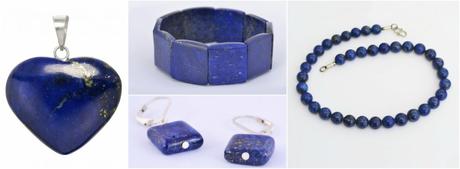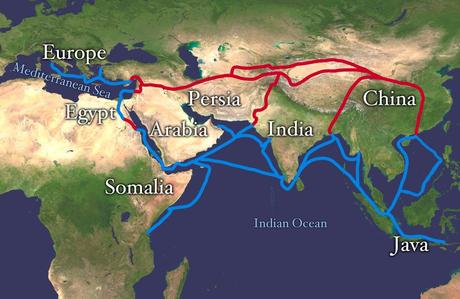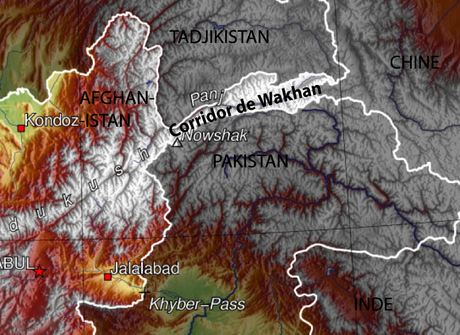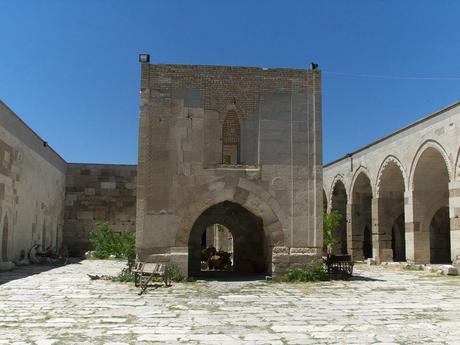
Around 3000 B.C the trade routes included Ur and Susa. This was the ancient region of lapis mines.The Chinese traveled through a village called Iskar via the Wakhan Corridor. While the Chinese looked for horses for their armies they found the exquisite lapis Lazuli. They found the Lapis Lazuli Magical Trade Routes. Afterwards, during the Han Dynasty (206 B.C- 220A.D) the Chinese sought Afghan horses and also Lapis Lazuli. Buddhists traveled through the same tracks from China and established in the Bamiyan Valley Also did Lapis Lazuli to China. This route was named the Silk Road. There are hundreds of tales involving the mysterious trade routes and with reason. These enigmatic routes unified civilizations. Enjoy!!
In this post you will find
The Silk Road

The Silk Road or Silk Route was an ancient network of trade routes that were central to cultural interaction through regions of the Asian connecting the West and East from China to the Mediterranean Sea.
The Silk Road derives its name from the lucrative trade in Chinese silk carried out along its length beginning during the Han dynasty.
Silk was the main trade item from china but many other goods like Lapis Lazuli were traded. Also religions, syncretic philosophies, as well as diseases, also traveled along the Silk Routes.
The main traders during antiquity were the Chinese, Arab, Turks, Indians, Persians, Somalis, Greeks, Syrians, Romans, Armenians, and Bactrians and from the 5th to the 8th century also the Sogdians.
Northern Route
The Northern Route started at Chang'an (now called Xi'an), an ancient capital of China that was moved further east during the later Han to Luoyang.
Southern Route
The Southern route or Karakoram route was mainly a single route running from China through Karakoram Mountains.

Sogdia and the Achaemenids
Sogdia was a pleasant area where merchants lived and traded lapis and also other goods. It was the ancient region of lapis mines.
About 3000 B.C the well known road of the northern Great Road of Khorassan, switched its route to link Ur and Susa. Susa dominated the settlement of Siak, an expert post. From Susa the changeover in trade routes benefited the kings of Ur in modern day Iraq. The Silk Road of the North lost its monopoly of lapis.
The plentiful amounts of Lapis Lazuli in Ur confirm the constancy of the trade in lapis.
Persia also traded eastward directly with the Indus River Valley Civilizations.
Dvaravati-Kamboja Route
The Kamboja-Dvaravati Route is the name given in old Jakatan to an ancient branch trade route of the Silk Route. It connected the Kamboja Kingdom in todays Afghanistan and Tjikistan via Pakistan to Dvarka and also other mayor ports in Gujaral, India.
The road was the second most important ancient caravan route linking India with the nations of the northwest.
Darius the Great (522-486 B.C) proudly claims that the Lapis Lazuli used in the construction of his palace at Susa came from Sogdia, an ancient province in Central Asia which included Badakshan, Afghanistan.
Famed for safe roads and reliable trading, the Persian princes extended caravan routes from Ectabana to Babylon.
The Wakhan Corridor

The Wakhan Corridor is the narrow strip of territory in northeastern Afghanistan that extends to China and separates Tajikistan from Pakistan.
The Wakhan Corridor forms the panhandle of Afghanistan's Badakshan Province. The Corridor was historically used as a trading route between Badakshan and Yarkland. Yarkland was the seat of an ancient Buddhist Kingdom on the southern branch of the Silk Route.
It appears Marco Polo came this way. Sir Aurel Stein explored the Wakhan and reported that at that time 100 ponies loaded of goods including lapis crossed annually to China.
Bamiyan Valley
The Hazarat region of central Afghanistan is the area of the Bamiyan Valley where historical trading took place between the Chinese and the natives for the sale of Lapis lazuli and the barter.
The Buddhist religion migrated from China to the Bamiyan Valley of Afghanistan.The buddhists carved two buddhas on the Bamiyan valley. These dominant statutes spoke of the past trade center on the Silk Route.
Chinese caravans with double humped Bactrian camels travelled to Afghanistan to trade.
The principle method the traders used to travel and carry their goods along the trade routes was the Caravan (Karvan). The Caravan is a group of individuals and pack animalstraveling together for safety in passing through hostile and inhospitable territory such as deserts ad rugged mountains. I was necessary for travelers to have negotiated safe passage.
Kings and local rulers charged taxes for the safety of the caravans and to assert their authority beyond urban areas.
Caravanserai

The Caravanserais were the inns where the trader stayed overnight. Chinese, Persian, Armenian, Afghan and also Greek merchants avoided ambush by exchanging merchandise without contact. They would lay out goods and retreat to a safe distance for the exchange.
Lapis Lazuli Corridor
Lapis Lazuli Corridor is created toward transit and trade cooperation among Afghanistan, Turkmenistan, Azerbaijan, Georgia and also Turkey. This Corridor intended to reduce barriers facing transit trade and develop a Custom Procedure Integration in the Region.
The corridor connects via road and rail Central Asia, the Caucasus, the Balkans and Central Europe and also connects effectively South Asia to European countries. The importance of this route to Afghanistan is an alternative and shortest, cheapest and also the safest way to these regions.
It's an initiative from Afghan Ministry of Foreign Affairs on the 15 of November of 2014.
The "Lapis Lazuli" is derived from historic export route that Afghanistan's Lapis Lazuli and other semiprecious stones were being exported through this route.
To understand the stone we have to understand where it comes from and how it comes to us. For exquisite Lapis Lazuli jewelry visit your favorite Nammu.com store.
